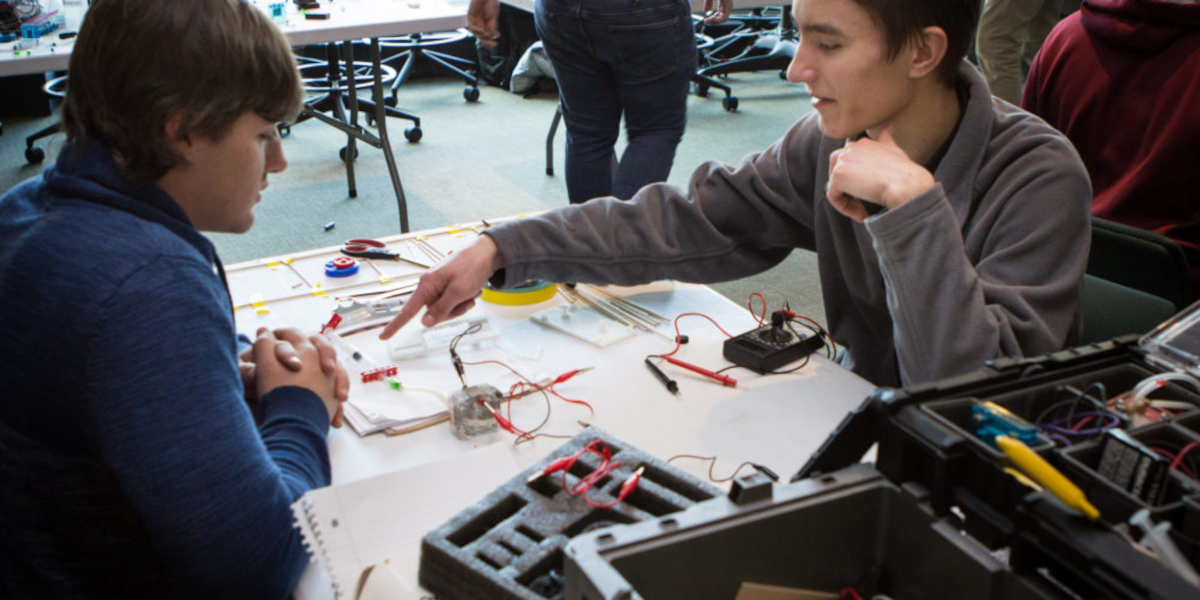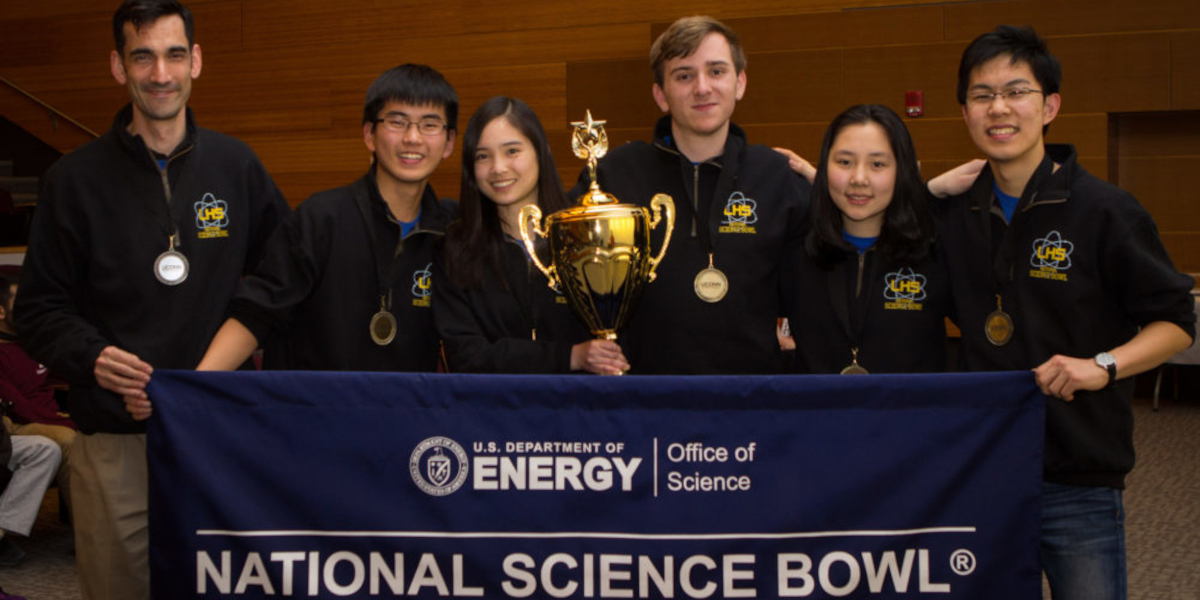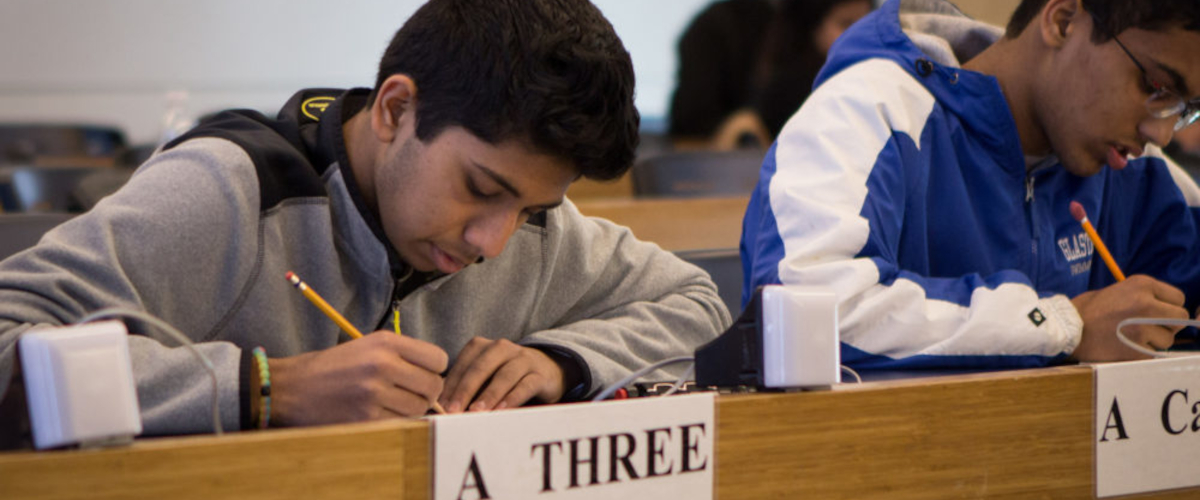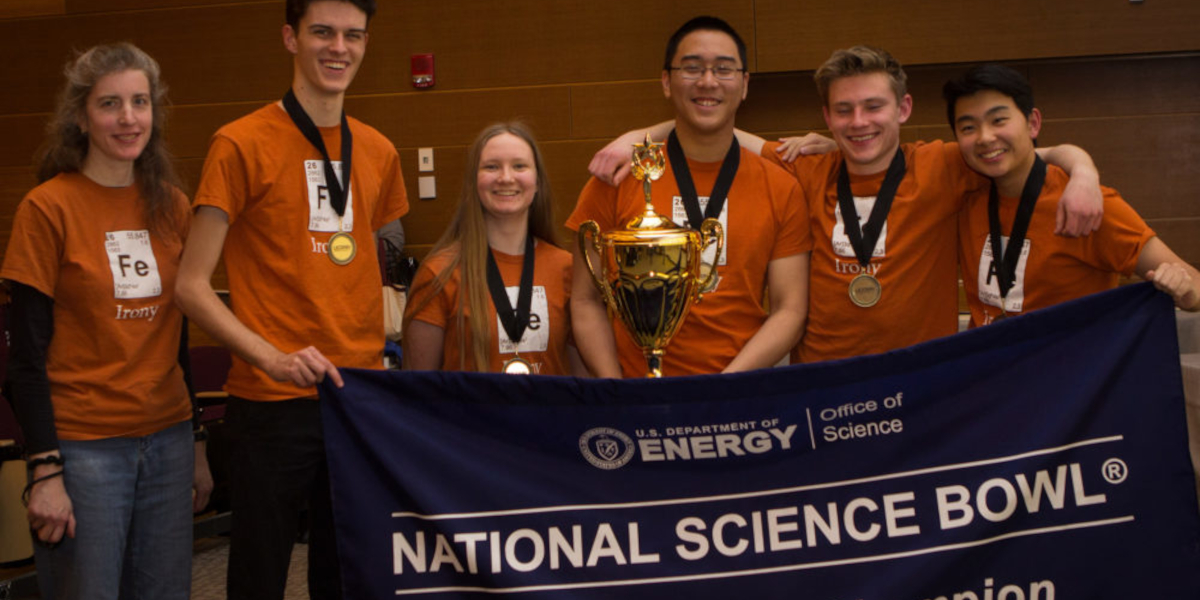



Galvanic Cell Car Race Competition
Northeast Science Bowl Regional : March 7, 2020
We will be hosting the galvanic-cell car race competition again this year, using supplies from the Fuel Cell Store (fuelcellstore.com). Details will be sent to participating teams.
Galvanic Cell Car Race Competition Rules
Purpose
The purpose of this competition is to give students exposure to hands-on design has a different feel from textbook problem solving or even traditional science labs. There is no single correct answer; any number of solutions developed by students can work. Educators know that most students are excited about generating ideas in a group and then building and modifying models based on these ideas. Students can see for themselves how changes in design are reflected in car performance.
The objective of the competition is to use math, physics, and engineering principles to build a small model car that can complete various challenges and to develop skills in programming which is an essential part of engineering.
Competition Format
The competition will have 3 unique tracks. The first two tracks are mechanical challenges where the student uses their own car. The last track is a coding challenge where a student will be given a pre-built car to program.
Students do not need to know any programming beforehand. All programming will be taught during the competition.
General Time Schedule:
Initial Build Time 3 Hours
Track 1 Competition. 30 Minutes
Build Modification Time. 1 Hour
Track 2 Competition. 30 Minutes
Coding and Programming Session 1 Hour
Track 3 Competition. 30 Minutes
All tracks have bonus challenges students can complete to gain extra points.
| NOTE: All cars must be built by the students on the day of competition with limited assistance from the coach or other adults. Please remember this is a student competition. If students have questions they should ask the volunteers at the event FIRST. This is to ensure each team is treated fairly as possible. |
Race Components
| Materials |
- A battery pack, motor, and AA batteries will be provided to ensure fairness.
- IMPORTANT: If you bring your own materials competition organizers will need to check over and approve them to determine if they would be fair to use in the competition.
- We supply basic materials and tools that allow students to build a fully operational car.
- The vehicle must be the team's design and can be altered at any time using materials provided to the team in addition to any and all raw materials you bring with you provided the car is within the guidelines detailed below.
- Upon request, volunteers may be able to provide additional tools and materials depending on availability.
| Vehicle Specifications |
- The vehicle must be safe to contestants and spectators, e.g., no sharp edges, projectiles, etc.
- Students must plan to attach a small 3V DC motor, a battery pack that holds two AA batteries.
| Track Specifications |
- This competition will feature 3 unique tracks that give students different types of challenges to compete.
- On the sides of the tracks there will be guide wires.
- The track is a hard, flat, smooth rubber surface.
| Additional Resources |
- For students who have never built a car before, here are a few resources that you can check out to formulate a plan beforehand.
- Understanding how gears and gear ratios work:
- https://www.yenka.com/en/Yenka_Gears
- http://geargenerator.com/
- https://woodgears.ca/gear_cutting/template.html
- Design consideration questions
- How many wheels?
- What wheel(s) should the motor power? Front, back, sides?
- How short/long should the car be?
- Understanding how gears and gear ratios work: